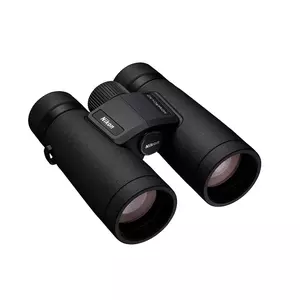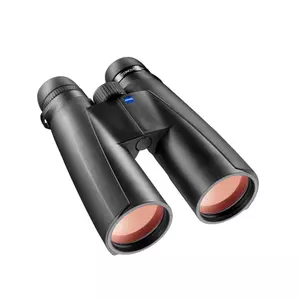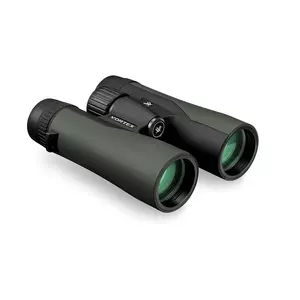What Are Binoculars: Definition and Uses
Binoculars are fascinating optical instruments, enabling us to view distant objects with enhanced clarity and a three-dimensional perspective. They are essentially a pair of telescopes, aligned side by side, tailored for each eye. The term 'binoculars' originates from Latin, with "bini" signifying 'two' and "oculus" meaning 'eye'. Essentially, binoculars are devices for 'two eyes'.
In short: Binoculars are optical devices consisting of two aligned telescopes mounted side by side, used for viewing distant objects. They magnify the view, enabling clearer and closer observation with both eyes, providing a three-dimensional perspective. Their design typically includes lenses and prisms that enlarge and correct the orientation of the image, making them useful for activities like birdwatching, hunting, stargazing, sports viewing, and travel.
- The Inner Workings of Binoculars
- Selecting the Right Binoculars
- Practical Applications of Binoculars
- Types of Binoculars
- FAQ about Binoculars
The Inner Workings of Binoculars

At their core, binoculars employ lenses and prisms to amplify and correct the image of the observed object. The lenses, curved glass or plastic, bend light rays to converge at a specific point. The prisms, transparent solids, redirect these light rays. This combination results in an enlarged, upright image for each eye.
Key components of binoculars include:
Objective Lens: The large front lens gathers light from the object, creating an inverted image inside the binocular.
Eyepiece Lens: Positioned at the back, this lens magnifies the image from the objective lens, presenting it to the eye.
Prisms: These elements flip the image to ensure it appears correctly oriented. Binoculars typically use either Porro prisms (Z-shaped, offering greater depth perception and field of view) or roof prisms (V-shaped, leading to a more compact design).
By the way, if you are looking for interesting binocular models, here are our top 4 best binoculars in 2025:
- High-End Performance at Affordable Price
- Ideal for Hunting, Birding, and Wildlife Viewing
- Enhanced Low-Light Performance
- Tack-Sharp Edge-to-Edge Vision with Deep Field
- Compact and Lightweight with Improved Light Transmission
- ED Glass Lenses Minimize Distortion
- Ideal for Birding and Wildlife Observation
- Rubber-Armored, Non-Slip Grip Design
- Waterproof and Fog-Proof for Reliable Performance
- Turn-and-Slide Rubber Eyecups for Eyeglass Compatibility
- HD Lens System for Vivid Imaging
- Best for Birdwatching and Nature Observation
- LotuTec Coatings for Scratch Protection
- Conveniently Placed Focusing Wheel for Easy Use
- Perfect for Stalking Game and Rough Terrain
- Exceptional Clarity and Color Fidelity
- Resistant to Water and Fog
- Eyecups Adjustable for Eyeglass Wearers
- Secure, Non-Slip Rubber Armor
- Includes GlassPak Harness for Easy Carrying
Selecting the Right Binoculars
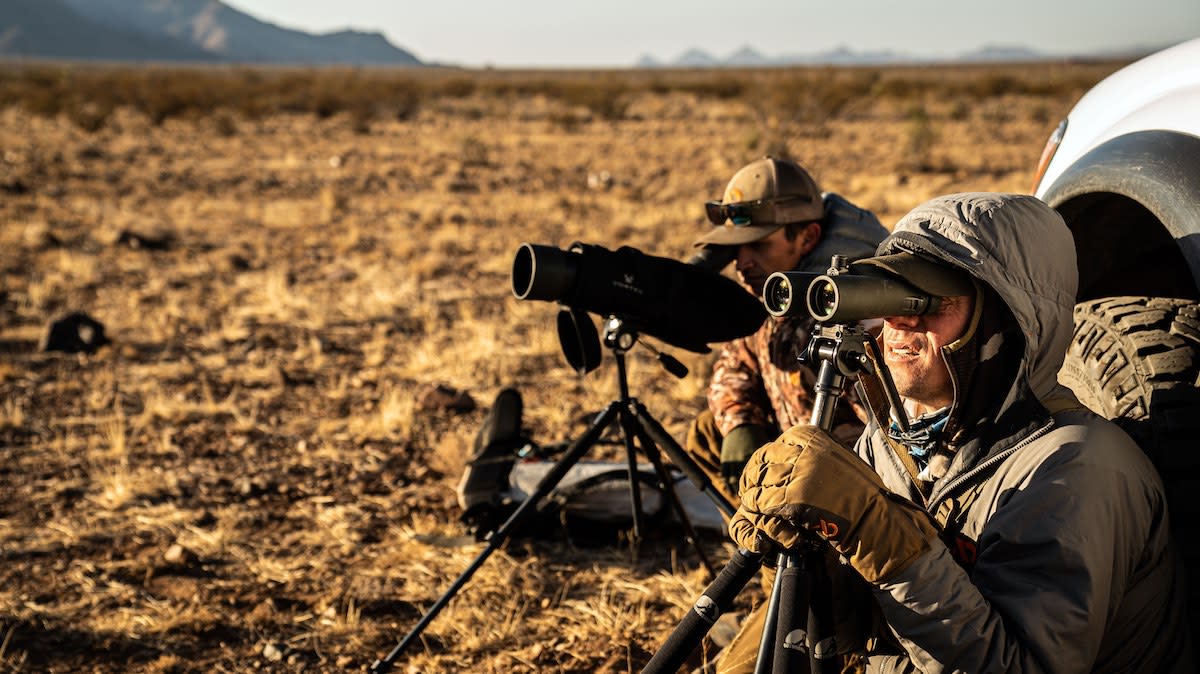
Choosing binoculars involves considering various specifications:
Magnification: Indicates how much larger the object appears compared to the naked eye. Higher magnification offers more detail but can make image stability and field of view challenging.
Objective Diameter: The size of the front lens, measured in millimeters, affects the brightness of the image and the overall weight and size of the binoculars.
Exit Pupil: Calculated by dividing the objective diameter by the magnification, this should ideally match or exceed the size of the viewer's pupil for comfortable viewing, particularly in low-light conditions.
Eye Relief: Crucial for glasses wearers, this measures the distance where the entire field of view is visible. Longer eye relief prevents vignetting (loss of image at the edges).
Field of View: This indicates the width of the area visible through the binoculars at a specific distance. Lower magnification typically means a wider field of view, beneficial for tracking moving objects and viewing large scenes.
Practical Applications of Binoculars
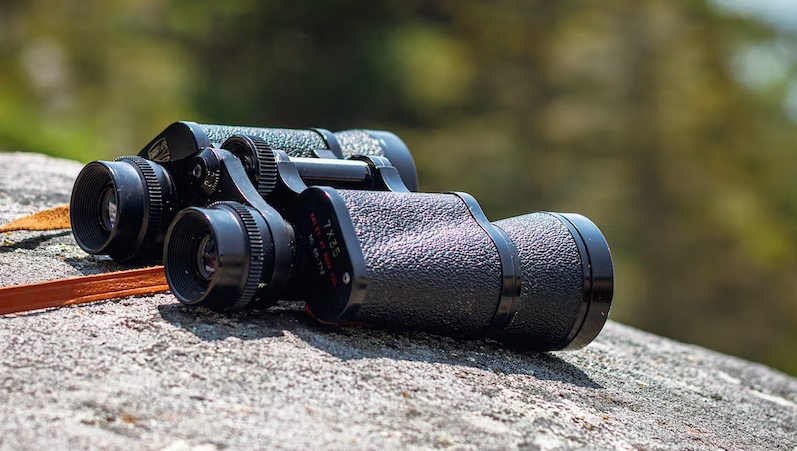
Binoculars serve various purposes:
Birdwatching: Ideal for observing birds in their natural settings without disturbance. Optimal birdwatching binoculars have moderate magnification, large objective diameters, wide field of view, and good close focusing ability.
Hunting: Useful for spotting game, assessing terrain, and ensuring safety. Hunters benefit from high magnification, large objective diameters, and strong low-light performance.
Astronomy: Great for viewing celestial bodies, offering a more natural and wider view than telescopes. Astronomical binoculars typically have high magnification and large objective diameters.
Sports Viewing: Enhance the experience of live sports by bringing the action closer. Best suited are binoculars with low to moderate magnification and a broad field of view.
Travel and Sightseeing: Enable clearer and closer views of landmarks and landscapes. Ideal travel binoculars are compact, lightweight, and easy to use.
Types of Binoculars
For your convenience, we have compiled a comparison table of different types of binoculars for a better understanding:
| Type of Binoculars | Description | Ideal Use | Lens Diameter | Magnification | Field of View | Weight | Special Features |
|---|---|---|---|---|---|---|---|
| Compact Binoculars | Smaller, lightweight binoculars, easy to carry. | Hiking, casual birdwatching, sporting events. | 20-28 mm | 8x to 10x | Narrower | Very light | Often foldable, water-resistant |
| Standard Binoculars | General-purpose binoculars with a good balance of magnification and field of view. | Birdwatching, nature observation, general use. | 30-40 mm | 7x to 12x | Moderate | Moderate | Often have better low-light performance |
| High-Powered Binoculars | Binoculars with high magnification, used for detailed observation at long distances. | Astronomy, long-distance birdwatching, surveillance. | 50 mm or more | 12x to 20x | Varies | Heavier | May require a tripod for stability |
| Marine Binoculars | Rugged and waterproof, often with built-in compasses. | Boating, marine use. | 30-50 mm | 7x to 10x | Wide | Heavier | Waterproof, fog-proof, corrosion-resistant |
| Image Stabilized Binoculars | Binoculars with built-in stabilization to reduce shake. | Birdwatching, marine use, astronomy. | 30-50 mm | 8x to 16x | Moderate | Varies | Image stabilization technology, often battery-powered |
| Night Vision Binoculars | Equipped with technology to see in low light conditions. | Wildlife observation at night, surveillance. | 40-60 mm | 5x to 8x | Varies | Heavier | Use infrared or thermal imaging technology |
FAQ about Binoculars
What is the difference between Porro prism and roof prism binoculars?
The difference between Porro prism and roof prism binoculars lies in their design and image quality. Porro prism binoculars feature a distinctive zigzag shape, with the eyepieces offset from the objective lenses. This design generally offers a more three-dimensional and broader field of view, but results in a bulkier and heavier set of binoculars.
Roof prism binoculars, on the other hand, have a streamlined, straight design with eyepieces aligned with the objective lenses. While more compact and lightweight, they typically come with a higher price tag and demand more precise alignment.
What is field of view and why is it important?
The field of view (FOV) in binoculars is the extent of the observable world seen through them at a certain distance, usually measured in degrees or meters at 1000 meters. For example, a 6-degree FOV means you can see a width of 6 meters from 1000 meters away.
A wider FOV is advantageous for viewing larger areas and tracking moving objects easily, but may compromise magnification and image sharpness. Conversely, a narrower FOV enhances detail and clarity but can make locating and following targets more challenging. The FOV is influenced by factors like magnification, objective lens diameter, and the binoculars' optical design.
What are lens coatings and why are they important?
Lens coatings are crucial in binoculars because they significantly enhance image quality. These coatings, applied to lens surfaces, reduce reflection and increase light transmission. This leads to improved contrast, brightness, and color accuracy, while minimizing glare and ghosting effects.
There are various levels of lens coating, including coated, fully coated, multi-coated, and fully multi-coated. The quantity and quality of these coatings directly affect the optical performance and price of the binoculars, with more and higher-quality coatings offering better visual results.
Conclusion
Binoculars are remarkable tools that augment our vision and enhance our experiences. They utilize twin telescopes to bring distant scenes closer, with various features determining their effectiveness for different activities. Whether for leisure, sports, or exploration, binoculars offer a window to a more vivid and detailed world, a testament to the wonders of optical science.
You may also like:

